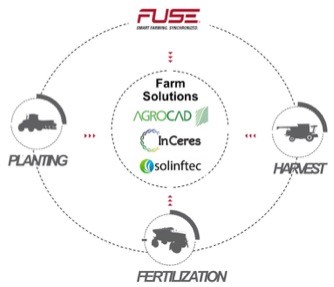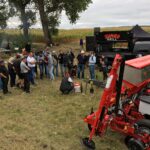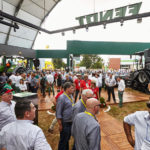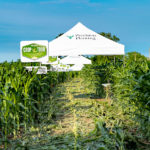Planting is one of the most important operations to maximize crop yields
Increase yields and profits by learning the most you can about planting factors and best planting practices. AGCO Farm Solutions can help.
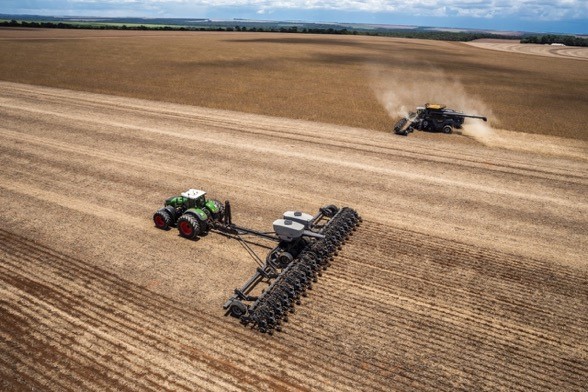
Planting is one of the most important operations to maximize crop yields
Increase yields and profits by learning the most you can about planting factors and best planting practices. AGCO Farm Solutions can help.At this time in the Southern Hemisphere, farmers are in the process of carrying out one of the most important actions for grain crops: planting. During planting, the number of productive units will be defined according to the adjustment of each cultivar/hybrid and region. Thus, we define the number of plants per unit area that will intercept sunlight, take up water and nutrients and fight off harmful organisms such as weeds, insects, fungi, nematodes, among others. The success of the planting comes from understanding the many factors are involved in the process.
The technologies available on the market provide growers with the potential to increase their yields and reduce waste. However, it is still important to understand that success in planting and yield is proportional to the level of knowledge we apply per square meter, together with the technologies compatible with this level of knowledge. That goes for all crops.
Now let’s talk about factors for successful planting, some of which come before or after the action of planting itself:
- No-till and crop rotation: For South America cropping systems, this is the foundation to reach higher yields at a low cost to the environment. It is responsible for maintaining a productive area over the years, as it allows the conservation of soil, water and nutrients.
- Agricultural zoning of climate risk: The Brazilian government provides a free tool for farmers to manage planting dates with less chance of yield decreasing due to adverse conditions such as drought, frost, hail, high temperature, etc. Learn more about zoning and planting dates in your area here.
- Planting date: As mentioned above, the Brazilian government already provides a platform to manage this important factor. To understand its importance, the planting date should be the one that increases the interception of sunlight by plants, as well as the one where soil temperature and moisture are favorable for seed germination.
- Seed quality: The seed used must have high vigor and germination values, which will allow uniform emergence. In addition to the aspects related to vigor/germination, we should always pay attention to the physical quality (strange speck, size, moisture, weight of 1000 seeds) and phytosanitary quality, besides of course the genetic quality, which defines the yield potential.
- Seed treatment: It is important to evaluate the use of treatments each season, but it is difficult to think about planting any crop without seed treatments like fungicides, insecticides and inoculants. Both fungicides and insecticides protect the seed from damage in the soil, especially in situations where planting occurs under adverse conditions of moisture and temperature. Inoculants aim to make nutrients and other compounds available, improving crop growth and reducing costs. Today, most producers are looking for more efficient and fast inoculation solutions such as in-furrow inoculation.
- Genetics: Genetics represent the yield potential of a cultivar or a hybrid. Genetics determine many things in planting, such as the number of seeds per area, as well as their resistance to adverse weather conditions and resistance to insects, diseases and herbicides.
- Crop nutrition: It is a very important part because it is the “food” of the plant and there are several ways to make it: dry fertilizer, organic fertilizer, foliar and biological fertilization. The most traditional form is dry fertilizer, where we apply a portion or even all nutrients by broadcasting or banding. In general, banding fertilizer is more efficient, because fertilizer applied in the furrow stimulates root development. However, sometimes we broadcast fertilizers to improve logistics during planting and to ensure that it is all applied in time for the most appropriate planting date. We use foliar (leaf) fertilization to release micronutrients when there is a specific need, while organic and biological fertilization has recently gained strength, showing good results. Inoculation can also be a form of biological fertilizer, as it makes nitrogen available to many crops.
- Machinery: Planting equipment must ensure the success of correct seed distribution in the seed bed. Correct distribution means we have seeds deposited at the same depth, evenly spaced in the bed, without skips and doubles, all over the ground (even if it has bumpy topography) and with no overlap. To maintain this quality, one needs to pay attention to the operational capacity of the planter, because when we want to plant faster to end up planting by the best planting date, the increased speed can reduce the planting quality and reduce the crop yield potential. Thus, it is important to adjust the number of machines to the size of the farm, avoiding the need for an excessive increase in speed, or alternatively, operators can invest in new technology that permits high-speed planting. Planting at the optimal speed for the planting and field conditions will make better use of the inputs, such as seeds and nutrients. The technology available in modern planters allows us to be more efficient in planting. It also allows the use of agronomic information to project seed rate aspects, as well as real-time monitoring of the operation, in partnership with technologies that deliver proper seed distribution.

As soybeans in Brazil are harvested with a Fendt® IDEAL™ combine, corn is planted in the same field with a Fendt MOMENTUM™ planter.
How AGCO helps the grower in this process:
AGCO and its brands and dealers aim to help the farmer to make more efficient use of production resources and inputs through the field application being performed at the right time, place and exact amount, reducing waste, costs and increasing crop yield potential.
For this, AGCO provides a package of agronomic services: the Farm Solutions. Farm Solutions seeks to integrate people, machines and processes to provide the farmers better utilization of their equipment, ideally 100% of its capacity. Then, their yields are limited only by the knowledge applied per square meter.
At planting time, Farm Solutions calculates and creates recommendations to make planting more efficient, such as:
- The best way to run the planter to increase the number of rows planted per hectare;
- Anticipating points where planter will be empty, to know when and where to load seeds and fertilizer;
- Allowing farmers to use controlled-traffic farming, which reduces soil compaction and erosion;
- Using variable-rate seeding and fertilizer prescriptions;
- Creating interpolated maps to evaluate the planting quality;
- Monitoring in a real-time basis the agronomic and operational pattern of planting.
To learn more about Farm Solutions from AGCO machinery brands in South America, visit this site for Massey Ferguson and this site for Valtra.
Written by: Vinicius Cunha. Vinicius is the Farm Solutions Coordinator for AGCO South America. He is leading the Agronomy & Farm Solutions efforts and seeking to help farmers to reach high yielding crops by better use of data, machinery and technology. Connect with Vinicius on Twitter at @vinicius_scunha or on LinkedIn at https://br.linkedin.com/in/vinícius-dos-santos-cunha-384191b8

